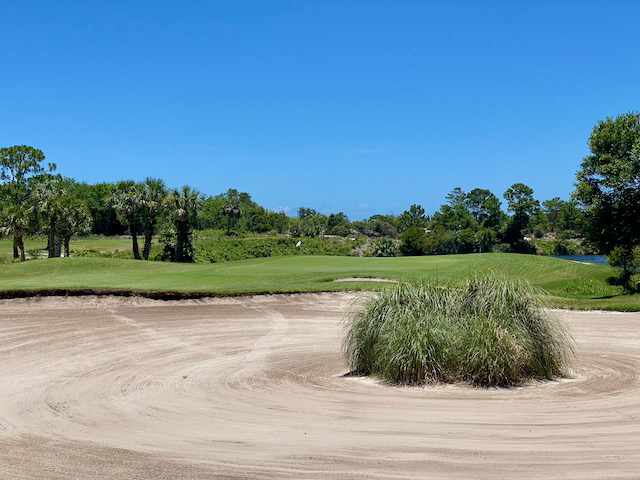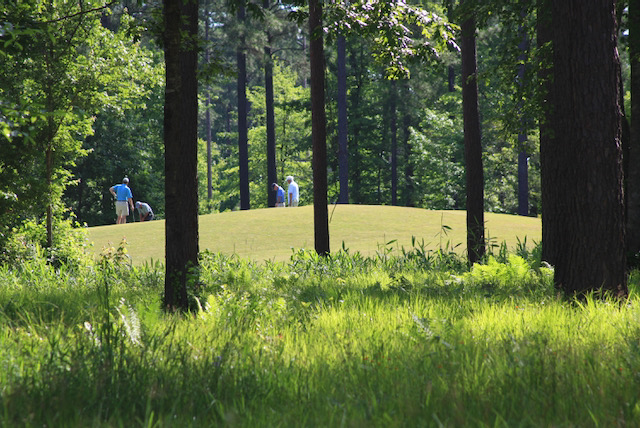Although tempted to write articles today about golf communities that are giving away free land, or that Donald Trump has put Sarah Palin in charge of Trump Doral Country Club, or that Bernie Sanders shot his age at Burlington Country Club, I would never try to make fools of any of my readers. Instead, here are a few headlines that sound foolish but actually are real.
16 Lots for Sale for $1 in Top Bluffton, SC, Golf Communities
As we’ve reported here a number of times, the recession was particularly hard on those speculators who loaded up on $400,000 properties in golf communities with mandatory memberships. But we are now a good two years past most of the problems with leisure residential real estate in high-quality communities, and who can pass up nicely treed lots priced at just $1 in places with great golf by the likes of Dye, Nicklaus and Fazio. Apparently many buyers haven’t gotten the memo, because we count 16 lots currently for sale at $1 each in those top communities. For you to snare one of them, all you have to do is commit to an initiation fee of $17,000 and to annual dues and homeowner fees of close to $20,000 -– and to writing a check for a buck. Contact me if you want more information. Residents at River Landing in Wallace, NC, have free and easy access to its two golf courses, since full golf membership is just over 100.
Residents at River Landing in Wallace, NC, have free and easy access to its two golf courses, since full golf membership is just over 100.
Twenty-Year-Old Course with 100 members, 36 holes
The general rule of thumb is that private golf clubs with fewer than 250 members are struggling to keep up. But what does that say about the prospects of a 36-hole club with just barely more than 100 members. We have all heard stories about a wealthy family or individual building a golf course for essentially their own use. In the case of River Landing, the Murphy Family originally built an entire golf community initially to help attract executives to the family’s sprawling commercial farm business two decades ago. Today, the two Clyde Johnston designed layouts on site rank in the top 50 in North Carolina, according to its state golf panel, and the River course is ranked just outside the top 25. (The other course is called The Landing.) The River has been the site for many U.S. Open qualifying rounds. Any couple looking for a quality golf community with a walk up and play golf club at a reasonable price -– dues are less than $500 per month –- should consider River Landing. Contact me and I will be happy to introduce you to Keith Suttle, the broker in charge. Look for an article about River Landing here in the next week.
Amelia Island Real Estate Agents Turn Down Customers
I am working with a customer who has identified Amelia Island, FL, as a place of interest for a potential relocation. Over the last two weeks, I have attempted to qualify a real estate agency in the area to work with my customer locally. If I don’t work with an agent in a particular area, my initial research is to scour the Internet looking for those who appear expert in golf communities. When I find one that seems the most qualified, I send him or her an email through their web site asking if they would like to discuss my customer. Understand that a buyer’s agent typically earns a 3% commission for his brokerage and that the agent receives a good chunk of that commission check. At minimum, the payoff amounts to a couple thousand dollars on most home sales. I have contacted four Amelia agents by email, and not a single one has responded. Memo to Amelia agents: Why do you spend the money to build a web site and maintain an email address?
New Homes in Fine Golf Community for $100 a Foot
If the terms “tragic” and “golf community” intersect anywhere, that place could be Cobblestone Park in Blythewood, SC, just north of Columbia, the state capital and home to the main campus of the state university. It was at the fledgling Cobblestone Park that bad boy developer Bobby Ginn in the mid 2000s wined and dined mostly blue-collar potential buyers and convinced them that a $200,000 payment for a lot and $500,000 for a home would generate many multiples in appreciation. Long story short, it didn’t, and today, some of those homes are for sale in the $300s & $400s. To make matters worse for their owners, D. R. Horton stepped in at the beginning of the recession and purchased lots in bankruptcy for pennies on the dollar. They are now offering new homes in the high $200s and low $300s at roughly $100 per square foot, much lower than the resale homes. One of our readers, a retired police officer in Minnesota, got caught up in the hype and sold his $250,000 lot recently for $7,000. Say what you will about developer Bobby Ginn, he commissioned some nice golf courses, including the 27 holes at Cobblestone Park, north of Columbia, SC. The men's and women's golf teams at the state university have used the Cobblestone facilities for practice.
Say what you will about developer Bobby Ginn, he commissioned some nice golf courses, including the 27 holes at Cobblestone Park, north of Columbia, SC. The men's and women's golf teams at the state university have used the Cobblestone facilities for practice.
























